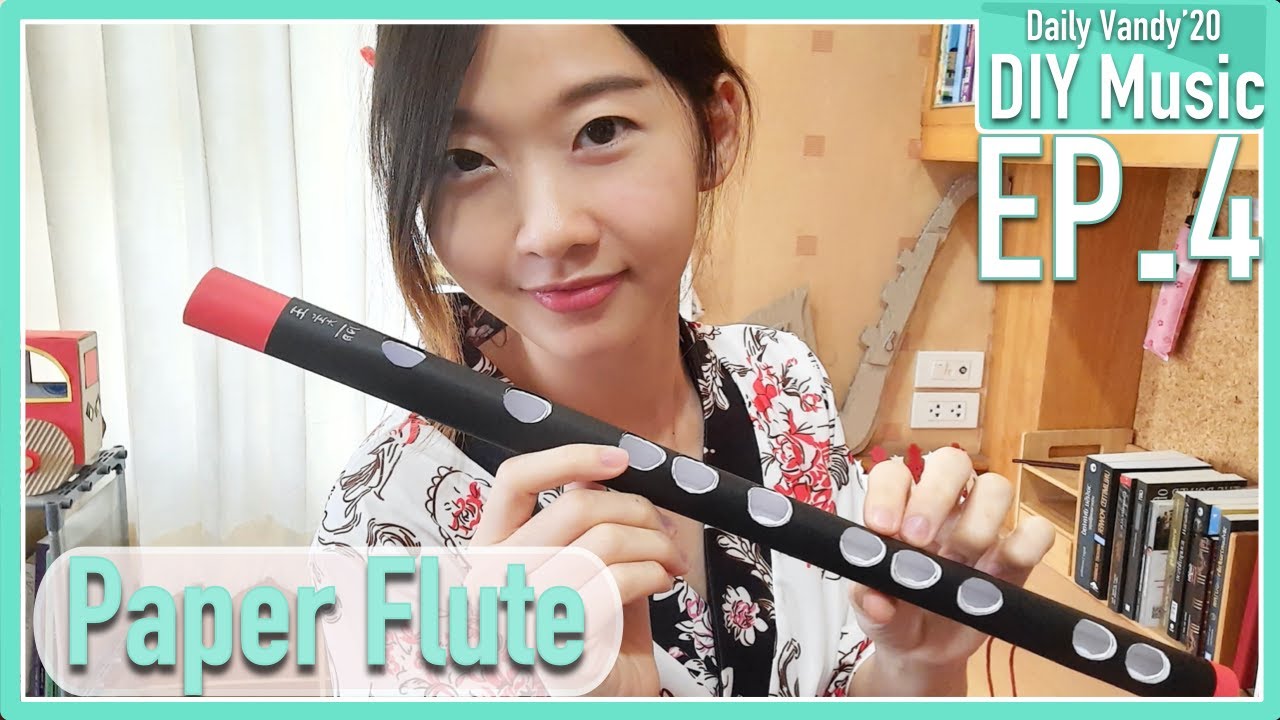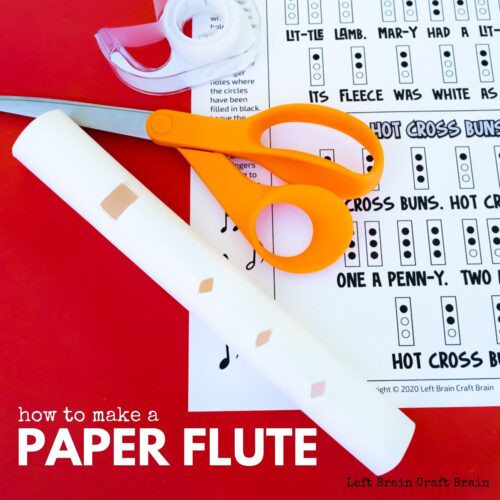Have you ever wanted to create your own musical instrument? Well, you’re in luck! Crafting a paper flute is not only a fun activity but also a fantastic way to dive into the world of music and creativity. This simple project requires minimal materials and can be completed in just a short amount of time. Plus, it’s a great way to spend an afternoon with friends or family. So, grab your supplies and let’s get started on making some sweet sounds with your very own paper flute!
Materials Needed for Your Paper Flute

Before we dive into the crafting process, let’s gather everything you’ll need to successfully create your paper flute. Here’s a handy list of materials:
- A sheet of paper: You can use printer paper, construction paper, or even old newspapers. Choose a paper that is flexible yet sturdy.
- Scissors: These will be used to cut the paper to the right size.
- Tape or glue: To hold everything together securely.
- A ruler: This helps measure your paper accurately.
- A pencil: For marking measurements on the paper.
- Optional: Markers or stickers: To decorate your flute once it’s complete!
Once you have all your materials ready, you’ll be well on your way to creating a unique musical instrument. Don't worry if you're not a musical expert; this project is all about having fun and exploring your creativity. Now that you have your materials lined up, let’s get ready to make some beautiful music!
Also Read This: How to Use Kastor All Video Downloader for Dailymotion
3. Step-by-Step Instructions to Create Your Paper Flute

Ready to make some music? Let's dive into the step-by-step instructions for crafting your own paper flute! Grab your materials, and let’s get started!
- Gather Your Materials: You’ll need:
- A sheet of paper (construction paper works great)
- Scissors
- Tape or glue
- A ruler
- A pencil
- A straw (optional, for a different sound)
Congratulations! You’ve just made your own paper flute. It’s simple, fun, and a fantastic way to explore sound!
Also Read This: Master the Art of Creating Hair Rollers at Home with Dailymotion Tutorials
4. Tips for Decorating Your Paper Flute
Now that you've crafted your paper flute, it’s time to let your creativity shine with some decorating ideas! Personalizing your flute can make it truly unique and fun to play. Here are some tips to get you started:
- Color It Up: Use markers, crayons, or colored pencils to draw patterns or designs on your flute. Think zigzags, polka dots, or even your favorite character! This adds a personal touch and makes it visually appealing.
- Stickers and Decals: Enhance your flute with stickers! Whether it's music notes, stars, or colorful shapes, stickers can add a fun flair. Just make sure they’re not too heavy so that they don’t affect the flute's sound.
- Washi Tape: This decorative tape comes in various colors and patterns. Wrap it around the body of your flute for an eye-catching design. It’s also a great way to reinforce the paper, making it a bit sturdier!
- Personalized Messages: Write a favorite quote or song lyrics on your flute. Not only does this give it character, but it also motivates you while playing!
- Adding Ribbons: Tie some colorful ribbons to the end of your flute for a whimsical look. The ribbons can flutter as you play, adding a delightful visual element to your performance.
Remember, the goal is to have fun. Your paper flute is a canvas for your creativity, so let your imagination run wild! Whether you keep it simple or go all out, your unique style will make your flute even more special.
Also Read This: Exploring Popular Content on Dailymotion Beyond Truth and Ideals
5. How to Play Basic Notes on Your Paper Flute
Now that you’ve crafted your very own paper flute, it’s time to make some music! Playing basic notes on your flute is not only fun, but it’s also a great way to impress your friends and family. Let’s dive into the simple steps you need to follow to get started.
Understanding Your Flute
Before you start blowing, it’s important to familiarize yourself with the flute. Your paper flute has a series of holes that allow you to create different pitches. By covering or uncovering these holes, you can change the sound. Think of it like playing a piano, where each key produces a different note!
Basic Notes to Try
- Note C: Cover the first hole from the top and blow gently.
- Note D: Uncover the first hole but cover the second hole. Blow steadily.
- Note E: Uncover the first two holes and cover the third. Blow softly.
- Note F: Cover the first three holes and blow with moderate force.
- Note G: Uncover the first three holes but cover the fourth hole. Keep your breath consistent.
Once you’ve mastered these notes, try creating simple melodies! Start with familiar tunes like “Twinkle, Twinkle, Little Star” or “Mary Had a Little Lamb.” The more you practice, the better you’ll become!
Tips for Success:
- Breathe: Use steady, controlled breaths. If you blow too hard, the sound can become squeaky.
- Experiment: Don’t be afraid to try different fingerings and see how it affects the sound.
- Listen: Pay attention to the notes you play. They should be clear and distinct.
Playing your paper flute is all about having fun. So grab your flute, find a cozy spot, and let the music flow!
6. Common Mistakes and How to Avoid Them
While making music with your paper flute is exciting, beginners often stumble upon a few common pitfalls. But don’t worry! I’ve got you covered with tips on how to avoid these mistakes and make your flute-playing experience enjoyable.
1. Poor Breath Control
One of the most frequent mistakes is blowing too hard or too softly. If you’re too forceful, your notes may sound harsh or squeaky. If you don’t blow hard enough, you might not get any sound at all. Tip: Practice taking deep breaths and exhaling slowly to maintain a steady airflow.
2. Incorrect Finger Positioning
Another common issue is covering the holes incorrectly. Make sure your fingers completely cover the holes to prevent air leaks, which can lead to off-pitch notes. Tip: Use your fingertips, and if you feel air escaping, adjust your finger placement.
3. Lack of Practice
Like any instrument, mastering your paper flute requires practice. Many beginners give up after a few tries if they don’t sound perfect right away. Tip: Set aside a few minutes each day to practice. You'll see improvement over time!
4. Getting Frustrated
It’s easy to get frustrated when you’re trying to learn something new. Remember, everyone starts somewhere! Tip: Take breaks when needed and return with a fresh mindset. Celebrate small wins!
By being aware of these common mistakes and following the tips provided, you’ll find yourself playing your paper flute with confidence and style. Happy playing!
 admin
admin








